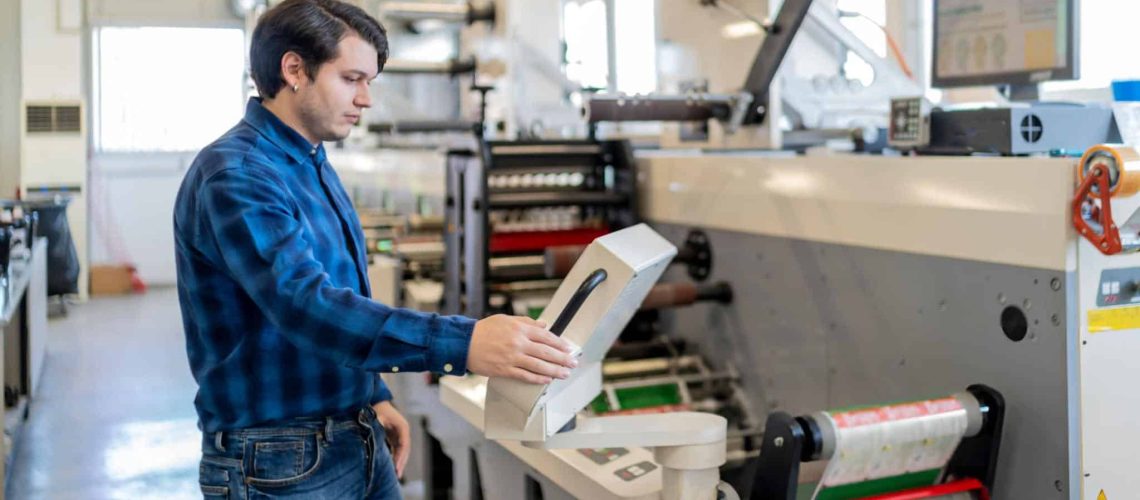Flex printing, a popular method in the packaging industry, combines efficiency with high-quality results, making it a preferred choice for businesses aiming to create vibrant and durable packaging materials. This process uses flexible rubber plates, allowing it to print on a variety of surfaces, from cellophane and plastics to paper and metallic films. As packaging continues to grow and innovate, flex printing remains essential due to its versatility and adaptability for different products and materials. However, like any printing method, it comes with its own set of challenges that can affect the quality of the final product.
Ensuring the quality of flex printing is not just about maintaining color vibrancy—it’s about upholding the integrity of the print across varied packaging materials. Errors in this process can lead to unsightly misprints, which could reflect poorly on the brand’s image. These problems don’t just end with an unsatisfied customer experience; they can also result in wasted resources and increased operational costs for the business. Understanding the common issues in flex printing and learning how to address them is key to optimizing the entire printing operation.
Common Flex Printing Issues
While flex printing offers many benefits, some issues frequently arise that can hinder the printing process and impact the end result. Being aware of these common hiccups is the first step in addressing them effectively. Here are a few problems businesses often face:
– Color Inconsistencies: Often, prints may have colors that don’t match the expected outcome. This can happen due to incorrect ink ratios or machine calibration errors.
– Misalignment of Prints: Sometimes, images may not align correctly on the substrate, leading to blurred or shifted images, which can mar the package’s visual appeal.
– Ink Smudging: Ink smudging or bleeding can occur if the ink takes too long to dry or the substrate isn’t suitable for the type of ink used.
Understanding these issues and their potential impacts can help businesses take proactive measures to reduce their occurrence. For example, regular machine maintenance and ensuring proper ink mixtures can significantly reduce color inconsistencies. By knowing these common flex printing hurdles, you can look out for them and optimize your printing process to avoid costly errors.
Causes Of Misprints In Flex Printing
To effectively address the issues in flex printing, it’s critical to understand what commonly leads to these misprints. The colors in your prints might appear off if the ink ratios aren’t just right, or if the printer hasn’t been calibrated correctly. Over time, equipment can drift out of alignment, leading to images that don’t align properly. This misalignment affects the aesthetic of the packaging and the message it conveys. Poor ink adhesion or incorrect drying times could make the ink smudge, especially when the substrate isn’t ideal for the chosen ink.
When getting to the root of these problems, keep an eye on the following aspects:
1. Color Procedures: Ensure consistent monitoring of ink mixing and machine calibration.
2. Machine Maintenance: Regular checkups help spot potential alignment issues before they arise.
3. Ink Properties: Choose inks that suit your specific materials to prevent drying delays or smudging.
Being vigilant in these areas will significantly reduce the potential for misprints and help achieve the desired print quality.
Solutions To Fix Common Flex Printing Problems
Once you pinpoint the causes of your flex printing mishaps, implementing solutions can seem straightforward. A few practical alterations can make a world of difference:
– Monitor and Adjust Ink Ratios: Use precise mixing procedures to ensure the colors stay true and vibrant.
– Regular Calibration: Schedule frequent maintenance check-ups to keep the machine operating at its best.
– Substrate Compatibility: Select inks that bond well with your chosen materials, which helps with faster drying and reduces smudging risks.
Addressing these points diligently can help maintain a consistent print quality that meets both visual and functional standards. The process not only streamlines operations but also enhances end-user satisfaction by delivering packaging that looks polished and professional.
Maintaining Quality In Flex Printing
A key aspect of successful flex printing is ensuring consistent quality over time. This means integrating best practices into your routine processes.
Firstly, regular maintenance is your first line of defense against unexpected machine failures. Scheduling routine checks can catch minor issues before they escalate, allowing for adjustments as needed. Secondly, the choice of materials directly influences print quality, so always opt for high-standard materials that enhance the final product’s appearance and durability. Lastly, knowledgeable operators play a crucial role in the process. Their expertise allows them to foresee potential problems and apply innovative solutions based on experience, effectively bridging the gap between technology and craftsmanship.
By putting these practices into motion, businesses can enjoy a seamless printing experience that highlights their brand positively, ensuring the package’s look contributes to the product’s appeal on the shelf.
Ensuring your flex printing process is optimized can dramatically improve the quality and consistency of your packaging. By focusing on regular machine maintenance, using the right materials, and having skilled operators on board, you set the stage for success. If you’re ready to streamline your operations and want to explore innovative solutions that suit your business needs, consider enhancing your flex printing capabilities with Fortis Solutions Group. We are here to support your journey toward producing exceptional packaging that resonates with your brand’s image.
